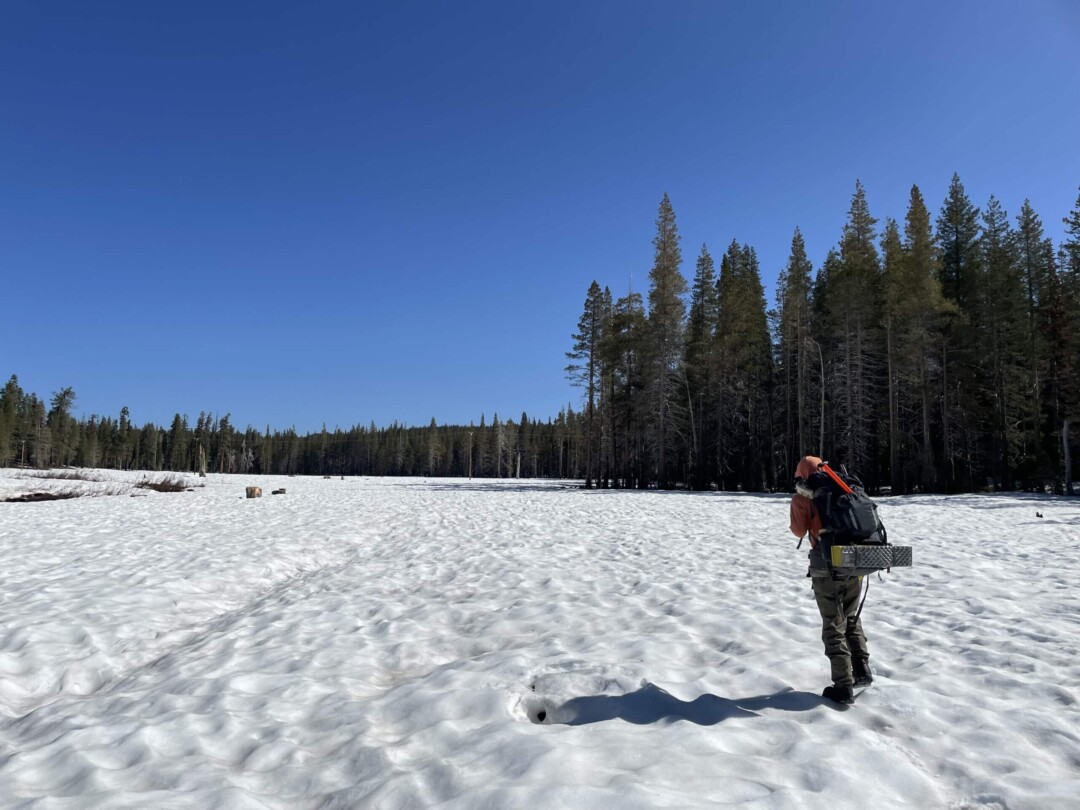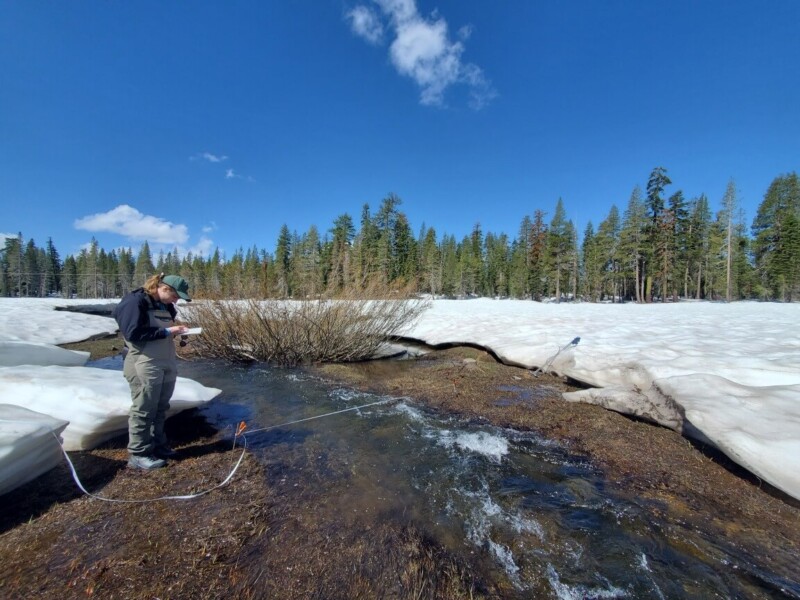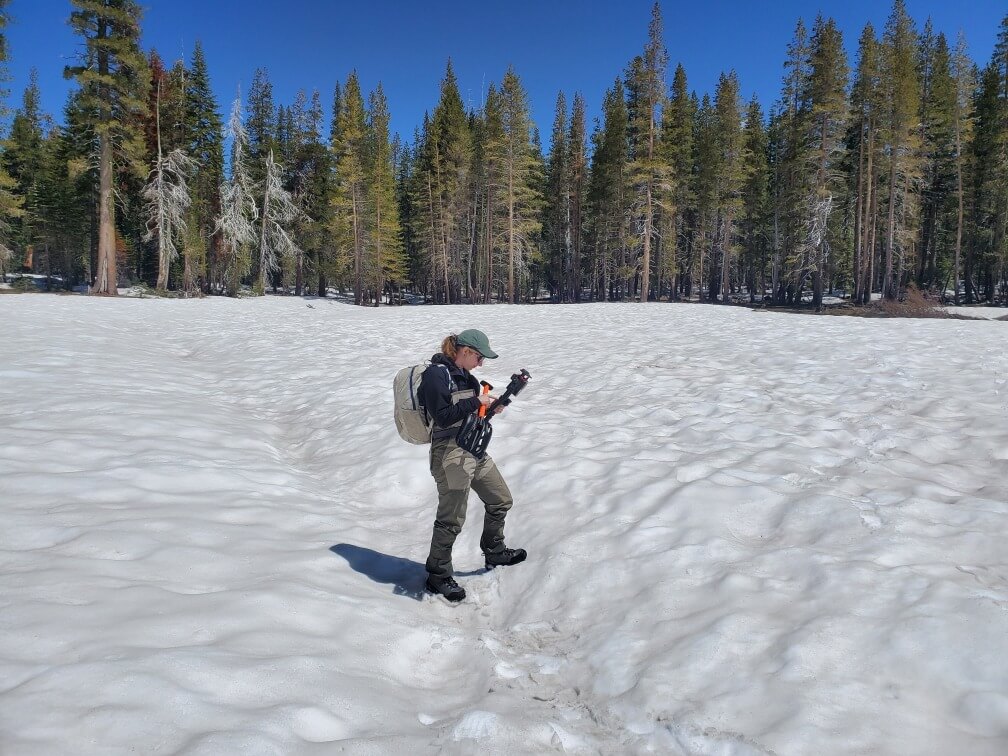Wrenn Cleary is a Sierra Nevada AmeriCorps Partnership (SNAP) member working with South Yuba River Citizens League (SYRCLY) as the River Monitoring Coordinator.
Wrenn recently visited West Church Meadow, a part of SYRCL’s Haskell Peak Meadow Planning Project, including five meadows and 218 acres of stream restoration work. She assessed West Church Meadow for water quality parameters and surface water flow. The project’s potential benefits include increased groundwater storage, improved water quality, increased growth of native wetland vegetation, and increased carbon sequestration.
Wrenn and her coworker, Kyle, monitored the West church Meadow in the North Yuba headwaters outside of Sierra City. Monitoring of this meadow is needed for pre-restoration data before work begins on fuel reduction, reducing hydrologic and sediment impacts from roads, and improving stream-to-floodplain connectivity.

The Haskell Peak Meadow Planning Project is primarily run by SYRCL, with the assistance of the U.S. Forest Service. Tahoe National Forest assists by providing restoration specialists for the project with expertise working in meadow restoration. Funding for the project came from the Wildlife Conservation Board‘s Forest Conservation Program.
The improvement of degraded meadows throughout the North Yuba River watershed increases the overall capacity of the watershed to hold water and sequester carbon. At a meta-population level, this work will increase the availability of functioning meadow patches across the region for wildlife to utilize for continued habitat, forage, breeding, and rearing.

Because the meadows in the Haskell Peak Meadow Planning Project are sub-alpine, they are especially vulnerable to climate change. The ecosystem processes of these Yuba River headwaters rely heavily on snowpack and act as “water banks” by holding snow water and releasing it slowly throughout the summer. Meadows also sequester carbon and provide habitat for threatened and native species, making them valuable ecosystems.
Protecting the headwaters of the Yuba within the Sierra Nevada ensures our watershed starts off on the best possible foot before migrating out to Sacramento and then to the Bay Area. The Sierra is home to many threatened species, including the spring-run Green Sturgeon and the Valley Elderberry Longhorn Beetle, as well as lamprey, Chinook salmon, and steelhead. Preserving these headwaters helps preserve the overall health of water systems in Northern California and protects countless species.
Funding for SNAP is supported by Tahoe Truckee Community Foundation’s Nature Fund and Martis Fund – a collaborative project of Martis Camp landowners, DMB/Highlands Group (the developers of Martis Camp), Mountain Area Preservation Foundation (MAP), and Sierra Watch. Sierra Nevada Alliance is a proud grantee of AmeriCorps and California Volunteers, Office of the Governor.


